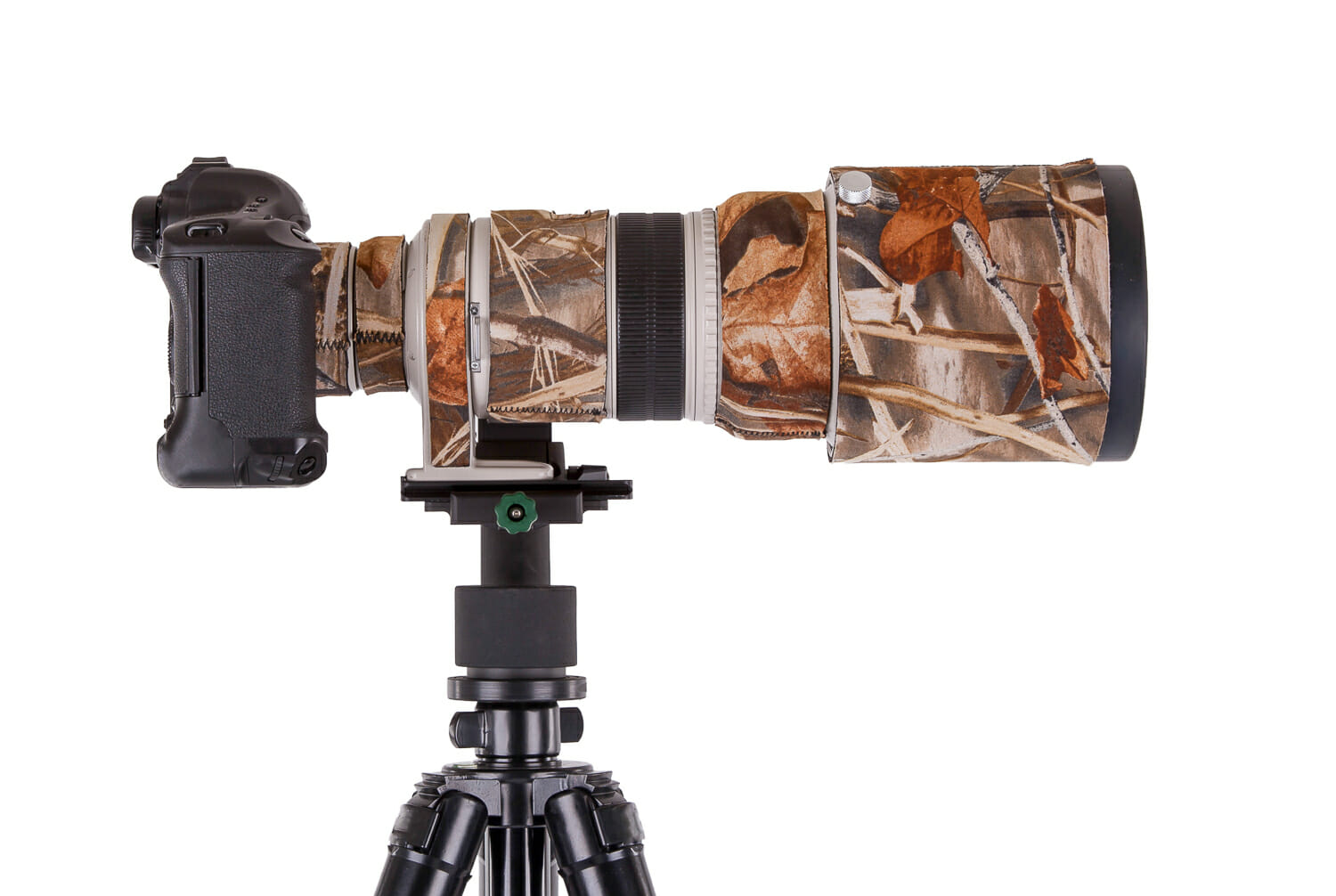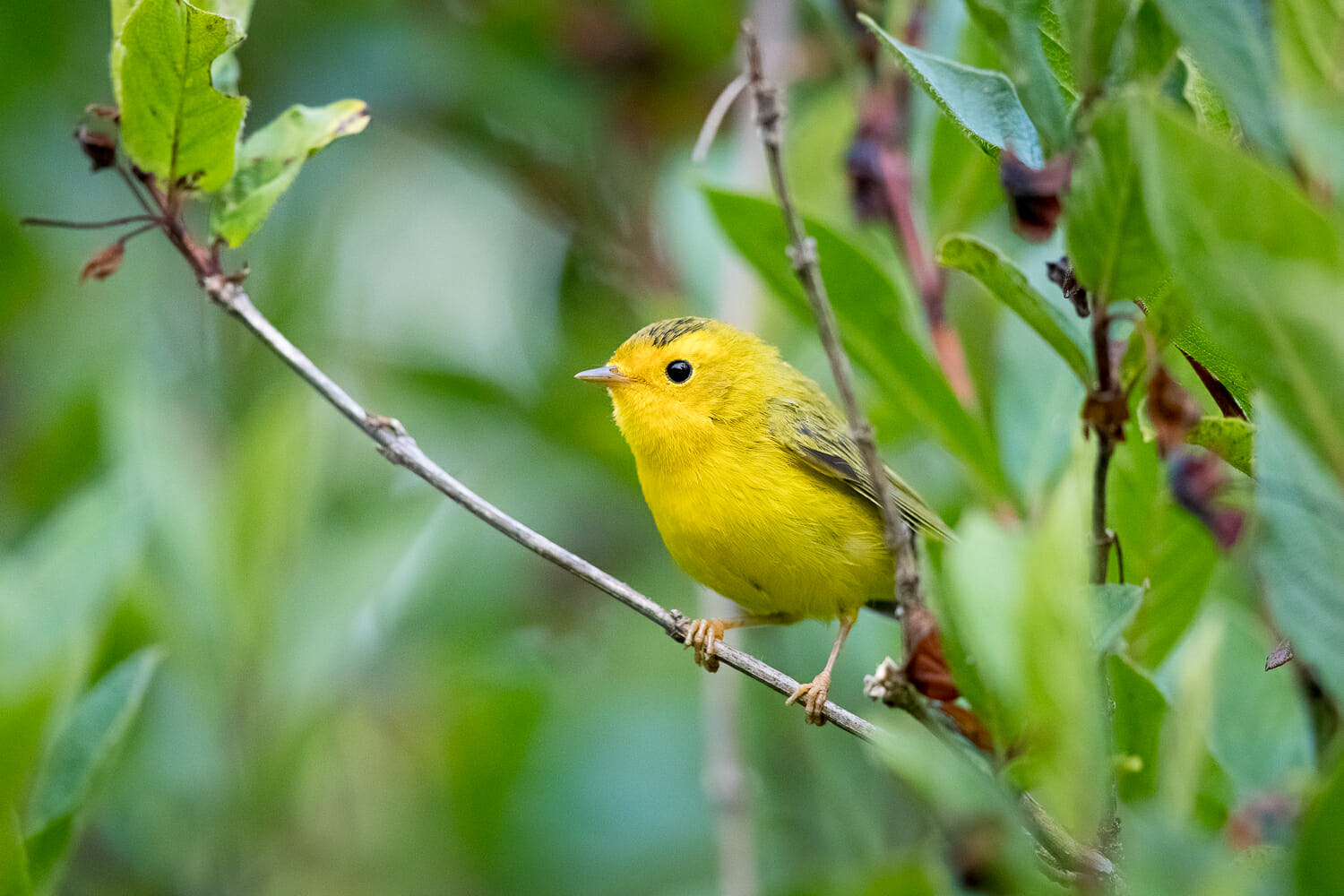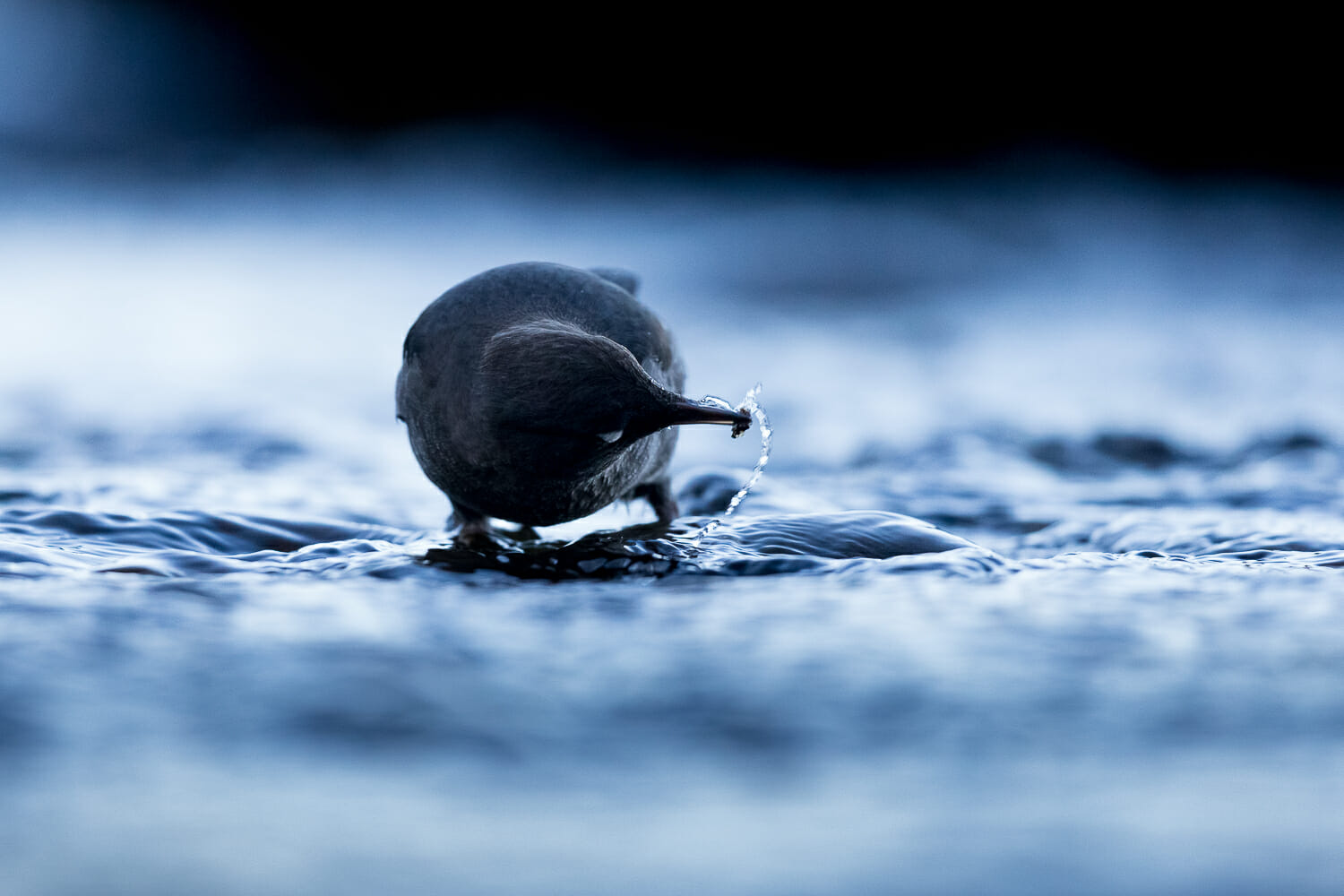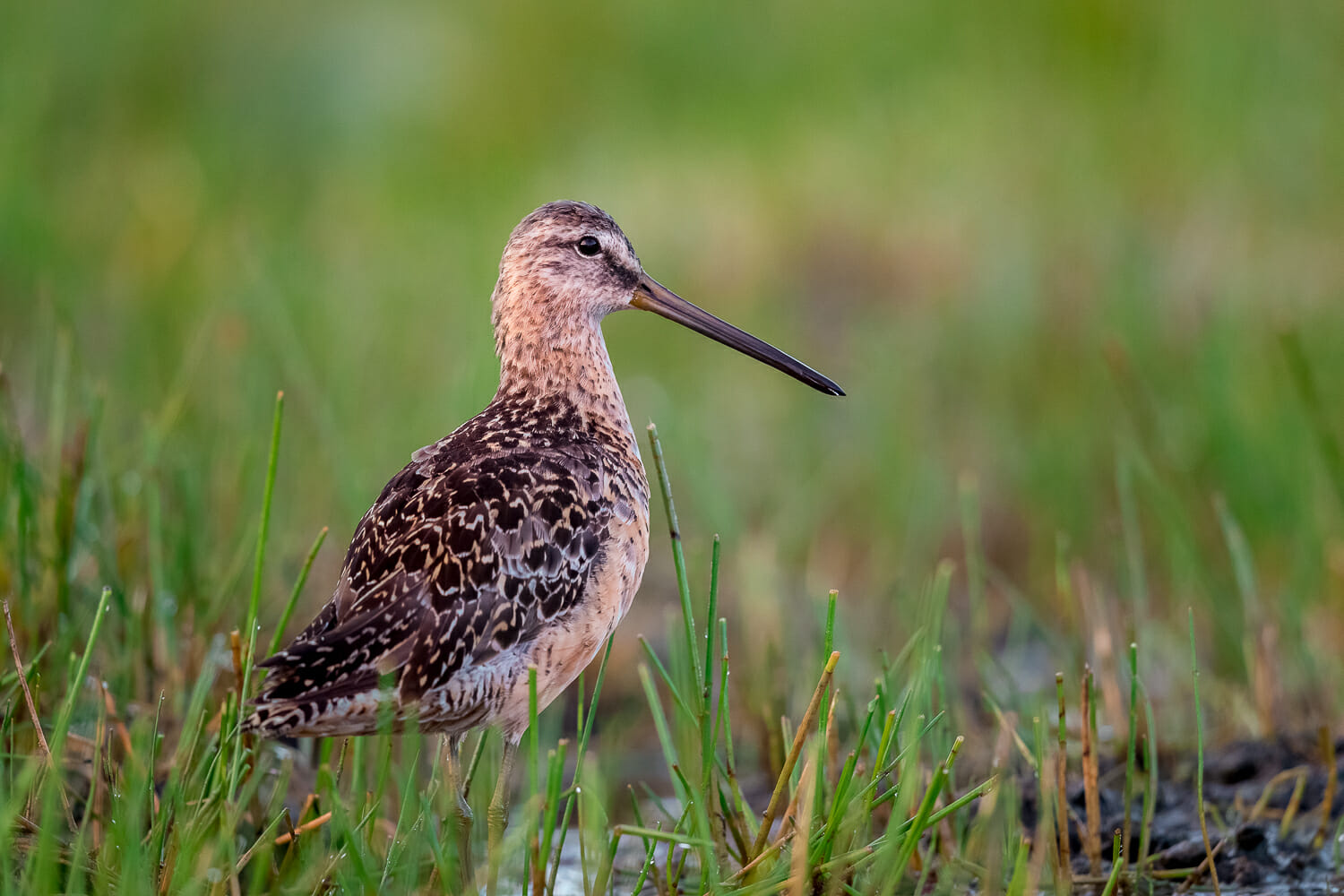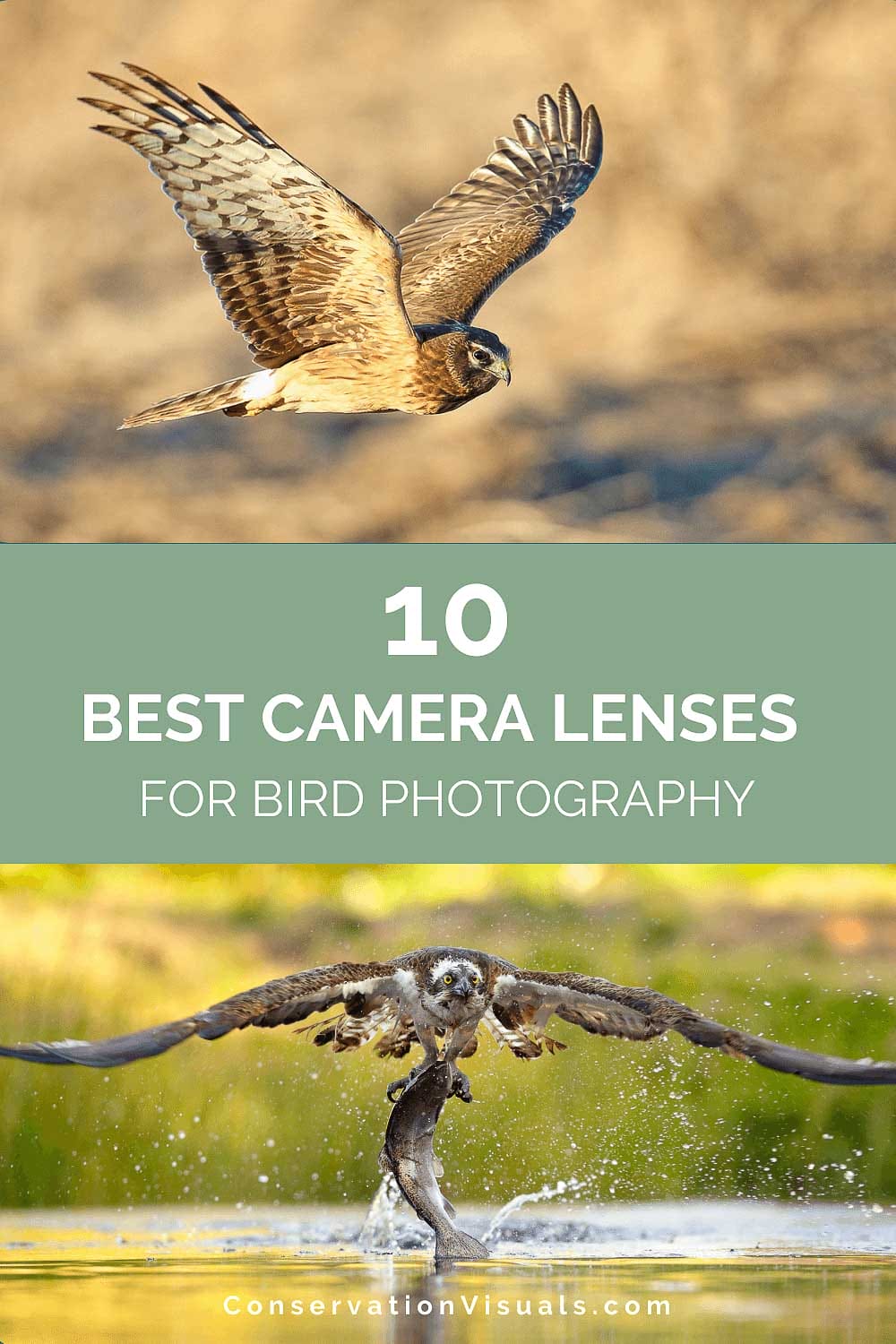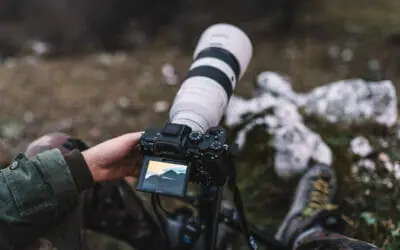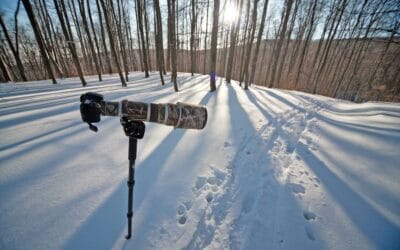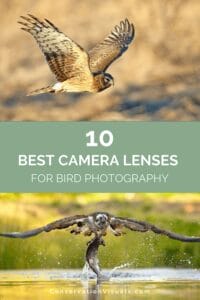Contents
- How we picked the best lenses
- Canon 100-400mm
- Canon 600mm
- Nikon 200-500mm
- Nikon 500mm
- Sony 200-600mm
- Sony 600mm
- Tamron 150-600mm
- Sigma 150-600mm
- Olympus 40-150mm
- Olympus 40-150mm
- What kind of lens do you need?
- What's the minimum focal length?
- What aperture do you need?
- What lens do pros use?
- How to choose the best lens
Great photos aren't made by gear alone but by the person behind the camera. Yet, in bird photography, the right equipment – especially lenses – makes a big difference in getting the shots you want.
With astounding advances in camera and lens technology, I've seen people brand new to photography capture wow-inducing bird photos that once would have taken years of practice to get in the past.
Today's top mirrorless cameras have exceptional eye-tracking autofocus, extremely sensitive sensors for low light, high frames per second (FPS) rates, and burst modes with fast buffering. And best of all, there are plenty of lenses out there to take advantage of everything they offer.
Manufacturers have crafted lenses with advanced image stabilization, lightning-fast focusing speeds, and impressive zoom ranges. In short, with the right gear, your odds of getting good shots are higher than ever.
Whether you want to grab some lovely photos of the hummingbirds who frequent your feeders, you're hoping to capture migrating warblers, or you are longing to capture that perfect osprey-entering-the-water shot, picking the right lens is important.
So now the question is: which lens do you choose, and how do you make an informed decision? We've got your back on that front.
Contents
- How we picked the best lenses for bird photography
- Canon EF 100-400mm F/4.5-5.6L IS II USM
- Canon EF 600mm F/4 L IS III USM
- Nikon AF-S FX Nikkor 200-500mm
- Nikon AF-S Nikkor 500mm F/5.6E Pf ED VR
- Sony FE 200-600mm F/5.6-6.3 G OSS
- Sony FE 600mm f/4 GM OSS
- Tamron SP 150-600mm G2 F/5-6.3 Di VC
- Sigma 150-600mm F/5-6.3 DG DN OS
- Olympus M.Zuiko Digital ED 40-150mm F/4.0-5.6 R
- Olympus M. Zuiko 40-150mm F/2.8 PRO
- What kind of lens do you need for bird photography?
- What's the minimum focal length for bird photography?
- What aperture do you need for bird photography?
- What lens do professional bird photographers use?
- How to choose the best lens for bird photography
How we picked the best lenses for bird photography
We at Conservation Visual Storytellers Academy have extensive experience in nature and wildlife photography. Our writers and editors use the major camera systems available and have decades of experience in the field.
To choose the best recommendations for you, we combine personal experience, insights from fellow pros and industry experts, editorial and user reviews, and details from manufacturers. We carefully weigh the pros and cons of each item and put only what we feel is the best selection available into our recommendation guides.
We've curated a selection of lenses meant to meet the needs of different photography goals and budgets. Factors we take into consideration for choosing such a lens include weight, image stabilization, low-light performance and autofocus capabilities.
We also included a mix of entry-level and professional lenses, as well as lenses that are compatible with multiple camera systems. And of course, since most successful bird photography means having a long lens to respectfully and ethically photograph subjects at a distance, we zeroed in on lenses that offer plenty of reach.
For advice on what to consider in a bird photography lens and how to choose the right lens for you, use the table of contents to jump to those sections.
Best Lenses for Bird Photography: Our Reviews & Recommendations
1. Canon EF 100-400mm f/4.5-5.6L IS II USM
Best zoom lens for Canon camera users
- Fast autofocus
- Updated stabilization
- Good weatherproofing
- Minimum focusing distance is only 3.2 feet
- The price is on the high end for a lens of this focal length
- Not a ton of reach, which can be problematic with small birds
SPECIFICATIONS
- Compatibility: Canon EF DSLR/mirrorless with EF-RF Adaptor
- Stabilization: Yes
- Maximum Focal Length: 400mm
- Aperture: f/4.5-38
- Weight: 3.6 lbs
- Dimensions: 7.6 by 3.7 inches
- Minimum Focusing Distance: 3.2 feet
- Filter Size: 77mm
- Prime/Zoom: Super Zoom Telephoto
WHAT WE THINK
As a bird photographer, finding the right lens that combines exceptional focal length range, image quality, and easy handling can be quite a challenge. The Canon EF 100-400mm F/4.5-5.6L IS II USM Lens offers a highly versatile focal length range and excellent optical quality, making it an ideal choice for bird photography.
It is comfortable to handhold, and the image quality is fantastic. With fast autofocus and updated stabilization technology, this lens is perfect for photographing birds in action.
It's a good starting lens if you want to get into bird and wildlife photography but aren't sure you want to spend the big bucks on a monster prime telephoto lens.
It's also a great choice to experiment with a flexible focal length range before deciding on a prime telephoto lens. It works with both Canon's 1.4x and 2x extenders if you want extra reach.
All of these features come together to make the Canon EF 100-400mm F/4.5-5.6L IS II USM Lens a great option for those looking to take their bird photography to the next level in a budget-friendly way.
BEST PRICES
2. Canon EF 600mm f/4 L IS III USM
Best prime telephoto lens for Canon camera users
- Great reach for small birds
- Wide aperture
- Fast autofocusing
- 4-stop image stabilization
- Expensive
- Lighter than old versions, but still hard to handhold for extended periods
SPECIFICATIONS
- Compatibility: Canon Full-frame DSLR & 35mm EOS/mirrorless with EF-RF Adaptor
- Stabilization: Yes
- Maximum Focal Length: 600mm
- Aperture: f/4.0-32
- Weight: 6.71 lbs
- Dimensions: 6.6 x 17.6 inches
- Minimum Focusing Distance: 13.78 feet
- Filter Size: 52mm
- Prime/Zoom: Prime
WHAT WE THINK
If you're a professional bird photographer, there's no doubt that a 600mm f/4.0 lens has an irresistible charm. The low light capabilities and impressive reach make it a must-have for any serious bird photographer.
In this review, I decided to skip the 500mm version and focus on Canon's 600mm lens, mainly because of its weight advantage – it's almost the same weight as their equivalent 500mm lens! So, in this situation, opting for the extra reach is a no-brainer.
The image quality this lens delivers is simply outstanding. You'll enjoy silky smooth bokeh and incredibly crisp detail in every shot.
While it might not be easy for everyone to handhold this beast of a lens, many experienced bird photographers eventually get comfortable holding a lens of this size. It's all about practice and finding the right technique that works for you.
Investing in a big lens like this is definitely a major decision. However, considering the exceptional results and the advantages it offers in terms of reach and image quality, it's worth getting the best lens you can afford. In the case of this Canon 600mm f/4.0 lens, going for the extra reach without sacrificing too much in terms of weight is an excellent choice for any dedicated bird photographer.
BEST PRICES
3. Nikon AF-S FX NIKKOR 200-500mm f/5.6E ED VR
Best zoom lens for Nikon camera users
- Great price for the reach
- Compatible with both FX and DX formats
- A solid starter lens
- Smaller aperture not as good for low light
- Heavy compared to newer lenses
- Not weather sealed
SPECIFICATIONS
- Compatibility: Gen 2 Nikon FX & DX DSLRs ; mirrorless with converter
- Stabilization: Yes
- Maximum Focal Length: 500mm on FX/750mm on DX
- Aperture: f/5.6-32
- Weight: 5.07 lbs
- Dimensions: 4.2 x 10.5 inches
- Minimum Focusing Distance: 7.2 feet
- Filter Size: 95mm
- Prime/Zoom: Zoom
WHAT WE THINK
For years, prior to the emergence of mirrorless systems and Nikon's lighter PF lenses, one of the most popular combinations for bird photography was the Nikon D500 (a DX or cropped format) paired with the 200-500mm zoom lens.
The crop format essentially gives you an impressive 750mm reach using the 500mm lens, without compromising image quality. This Nikon lens and camera combo has worked wonders for many photographers, myself included.
If you're looking to dip your toes into the world of bird photography but also want the versatility of a zoom lens, this is an affordable option to consider.
Since many photographers have upgraded to mirrorless gear, you can often find these on the used market at attractive prices. I still keep both my D500 and 200-500mm lens as backup gear, just in case.
While not everyone can handhold this lens comfortably for extended periods, I've found that with practice, it's possible to manage it for a reasonable length of time.
So if you're searching for an entry-level setup that combines the flexibility of a zoom lens with the potential for stunning bird photography, the Nikon D500 and 200-500mm combo is definitely worth checking out.
BEST PRICES
4. Nikon AF-S NIKKOR 500mm f/5.6E Pf ED VR
Best prime telephoto lens for Nikon camera users
- Super lightweight for a fixed focal length lens and easy to handhold
- Medium price range
- Works on both FX & DX DSLRS (from 2007) and Z models with converter
- Maximum aperture is only f/5.6
SPECIFICATIONS
- Compatibility: Gen 2 Nikon FX & DX DSLRs ; mirrorless with converter
- Stabilization: Yes
- Maximum Focal Length: 500mm
- Aperture: f/5.6-32
- Weight: 3.2 lbs
- Dimensions: 9.3 x 4.2 inches
- Minimum Focusing Distance: 9.8 feet
- Filter Size: 95mm
- Prime/Zoom: Prime
WHAT WE THINK
If you're keen on photographing birds but aren't quite prepared to invest in a high-end prime telephoto lens, the 500mm PF is a lightweight and more budget-friendly option to consider.
While its price point is roughly twice that of the 200-500mm zoom, it weighs in at a mere 3.2 lbs, making it easier to handle.
Additionally, when paired with a DX (cropped) sensor body, you can effectively achieve a 750mm reach, giving you plenty of versatility for capturing stunning bird images.
Although mirrorless technology and native mirrorless lenses are currently in high demand, this combination remains a solid choice for those not quite ready to make the leap to mirrorless systems but still seeking a top-notch option for their bird photography endeavors.
So, if you're eager to start your bird photography journey and want a more accessible yet high-quality alternative to pricier prime telephoto lenses, the 500mm PF combined with a DX-format body could be just the ticket.
BEST PRICES
5. Sony FE 200-600mm f/5.6-6.3 G OSS
Best zoom lens for Sony camera users
- Big, versatile lens that won't break the bank
- Impressively quiet
- Reasonable weight for hand-holding
- Internal zoom and focus make for fast focus and zooming (nothing to move)
- Smaller aperture is not as good for low light conditions
- Lack of fixed aperture
SPECIFICATIONS
- Compatibility: Sony E-mount cameras (full & crop sensor)
- Stabilization: Yes
- Maximum Focal Length: 600mm
- Aperture: f/5.6/6.3 -32
- Weight: 4.7 lbs
- Dimensions: 12.5 x 4.4 inches
- Minimum Focusing Distance: 7.9 feet
- Filter Size: 40.5mm drop-in
- Prime/Zoom: Zoom
WHAT WE THINK
Suppose you're rocking a Sony E-Mount body and have your sights set on trying bird photography. In that case, the 200-600mm lens is a reasonably priced option that delivers flexibility in zoom range, speedy autofocus, and a lighter weight compared to non-Sony lenses.
It's tough to pinpoint any significant drawbacks with this impressive lens, aside from the somewhat narrow maximum aperture.
I've come across many people who switched to Sony's system and opted for this lens while they saved up for more high-end telephoto lenses.
If you're not planning to sell your photography and aren't keen on spending big bucks on a prime lens, this 200-600mm lens is an excellent starting point.
It's the perfect choice to help you dive into the world of bird photography without busting your budget.
BEST PRICES
6. Sony FE 600mm f/4 GM OSS
Best prime telephoto lens for Sony camera users
- Wonderfully long reach
- Sharp, fast autofocus
- Silent
- Expensive
SPECIFICATIONS
- Compatibility: Sony E-mount cameras (full & crop sensor)
- Stabilization: Yes
- Maximum Focal Length: 600mm
- Aperture: f/4-22
- Weight: 6.11 lbs
- Dimensions: 6.22 x 14.13”
- Minimum Focusing Distance: 15 feet
- Filter Size: 40.5mm drop-in
- Prime/Zoom: Prime
WHAT WE THINK
The Sony 600mm f/4 lens, when paired with their top-tier mirrorless A1 camera, has quickly become the favorite combination for many professional bird and wildlife photographers I've encountered.
Sure, some folks have remained loyal to Canon and Nikon as they, too, offer exceptional mirrorless pro equipment. However, the autofocus and eye-tracking capabilities of Sony's system are highly regarded and preferred by a significant number of photographers in the field.
This unbeatable duo of Sony's 600mm f/4 lens and the A1 mirrorless camera not only provides stunning image quality but also ensures that capturing fast-moving subjects like birds and other wildlife is a breeze.
So, if you're looking for the cream of the crop when it comes to bird and wildlife photography gear, this Sony combo is definitely worth considering.
BEST PRICES
7. Tamron SP 150-600mm G2 f/5-6.3 Di VC
Best lens for an affordable option for multiple camera systems
- Appealing price point
- Long reach compared to many other zooms
- Compatible with multiple systems, including crop sensors
- Focus can be slow
SPECIFICATIONS
- Compatibility: Canon EF, Nikon F
- Stabilization: Yes
- Maximum Focal Length: 600mm
- Aperture: f/5-6.3 – f/32-40
- Weight: 4.3 lbs
- Dimensions: 4.27 in. x 10.24 inches
- Minimum Focusing Distance: 7.22 feet
- Filter Size: 95mm
- Prime/Zoom: Zoom
WHAT WE THINK
The key benefit of this lens lies in its long focal length, which comes at an affordable price and is compatible with a wide range of DSLR systems.
This makes it an ideal choice for those just starting to explore the world of bird photography, offering great flexibility without breaking the bank.
However, it's worth noting that the autofocus on this lens may be slower when compared to more advanced systems, meaning users might face a steeper learning curve when trying to track and photograph birds in flight. As a result, you can expect fewer “keepers” initially as you hone your skills.
Nonetheless, this lens serves as an excellent entry point for budget-conscious photographers looking to venture into bird photography. It's a solid choice to kickstart your journey, and one that you'll likely upgrade later down the line when you're ready to take your skills to the next level.
📌 Sidenote: When ordering this lens, ensure you're ordering the version that is compatible your your brand of camera body.
BEST PRICES
8. Sigma 150-600mm f/5-6.3 DG DN OS Sports Lens
Best budget-friendly zoom lens
- Good price point
- Optical stabilization
- Built for Sony mirrorless full frame
- Quiet, fast autofocus
- Variable aperture (maximum aperture changes depending upon focal length)
- Slow to focus in low light
SPECIFICATIONS
- Compatibility: Canon, Nikon, and Sony E-mount cameras (full & crop sensor)
- Stabilization: Yes
- Maximum Focal Length: 600mm
- Aperture: f/5-6.3 – f/22-29
- Weight: 4.10 lbs
- Dimensions: 4.31 x 10.38 inches
- Minimum Focusing Distance: 1.10 feet
- Filter Size: 95mm
- Prime/Zoom: Zoom
WHAT WE THINK
This lens is a distinct version of Sigma's popular 100-600mm lens, specifically tailored for DSLR cameras and designed with Sony's full-frame mirrorless cameras in mind.
It performs exceptionally well with higher megapixel versions of these cameras. Moreover, even though it's intended for full-frame cameras, it's also compatible with crop sensor bodies.
The zoom range of 150-600mm offers remarkable versatility and reach, making it an appealing choice for anyone looking to expand their photographic capabilities without making a significant upfront investment.
While it may not be classified as a high-end telephoto lens, there's no denying the superb images it can produce.
Thanks to its extensive range of focal lengths, this lens is suitable for capturing birds both in your backyard and out in the field.
It's a fantastic option for bird enthusiasts who want to explore the world of bird photography with a powerful yet budget-friendly lens.
📌 Sidenote: When ordering this lens, ensure you're ordering the version that is compatible your your brand of camera body.
BEST PRICES
9. Olympus M.Zuiko Digital ED 40-150mm f/4.0-5.6 R
Best zoom lens for budget-conscious Olympus users
- Inexpensive
- Variable focal lengths
- No optical stabilization built-in
SPECIFICATIONS
- Compatibility: OM-D or OM Pen, Panasonic Micro Four Thirds
- Stabilization: No
- Maximum Focal Length: 150mm (80-300mm in 35mm equivalent)
- Aperture: f/4-5.6 -f/22
- Weight: 6.7 oz
- Dimensions: 3.5 x 2.5 inches
- Minimum Focusing Distance: 2.35 feet
- Filter Size: 58mm
- Prime/Zoom: Zoom
WHAT WE THINK
If you're a bird enthusiast primarily interested in documenting the birds you encounter, a micro four thirds camera might be a cost-effective option for you. Olympus stands out as a popular choice in this category, offering an affordable lens with an impressive focal length range that provides exceptional flexibility without breaking the bank.
While this lens may not have built-in optical image stabilization, it won't pose much of an issue if you're using it with an Olympus body that already has this feature integrated.
This lens proves to be a solid choice for backyard bird photography, particularly when you're keen on capturing images of birds visiting your feeder.
If you're looking for a budget-friendly lens that allows you to document your bird sightings without compromising on flexibility and image quality, this Olympus 40-150mm lens could be the ideal choice for your needs.
BEST PRICES
10. Olympus M. Zuiko 40-150mm f/2.8 PRO
Best zoom lens for Olympus users
- Wide aperture
- Good reach
- Excellent sharpness
- Sealed against dust and moisture
- Variable focal lengths
- Collapsible lens hood
- No optical stabilization
- Not a ton of reach, which can be problematic with small birds
SPECIFICATIONS
- Compatibility: OM-D or OM Pen, Panasonic Micro Four Thirds
- Stabilization: No
- Maximum Focal Length: 150mm (80-300mm in 35mm equivalent)
- Aperture: f/2.8 – f/22
- Weight: 1.7 lbs
- Dimensions: 6.3 x 3.1 inches
- Minimum Focusing Distance: 2.3 feet
- Filter Size: 72mm
- Prime/Zoom: Zoom
WHAT WE THINK
This lens represents the professional zoom option for micro four thirds cameras, consistently receiving high praise from online tests and reviews for its exceptional sharpness, durability, and minimal distortion. However, it's worth noting that it costs $1,000 more than the more affordable f/4.0-5.6 alternative. Evidently, this is a classic example of getting what you pay for.
If you're already invested in a Micro Four Thirds Olympus body, this fantastic lens will undoubtedly help you achieve those crystal-clear bird photos you've been dreaming of.
The zoom range is quite impressive, although it may not offer the extensive reach some bird photographers desire.
Similar to our other Olympus lens recommendation, the absence of optical image stabilization shouldn't pose an issue, as this feature is built into Olympus camera bodies. However, if you're using a Panasonic Micro Four Thirds camera, you'll want to consider a different lens that includes built-in optical image stabilization to ensure the best results.
So, for those committed to the Olympus Micro Four Thirds system, this premium lens is a great choice for capturing stunning bird images.
BEST PRICES
What kind of lens do you need for bird photography?
The challenge of shooting birds in flight is, well, that they can fly! And, as any birder will tell you, they usually fly when you take just one step closer to get a better look at them.
Therefore, the big challenge for bird photographers is choosing a telephoto lens that balances speed, weight, a wide aperture, plenty of reach, and of course, falls within your budget.
Because of the skittish nature of birds, it's a clear advantage to have a lens with a long focal length. Whether your camera has a crop sensor or full-frame sensor, more focal length means the subject looks closer in the viewfinder, and the better the image you'll be able to capture.
The first choice you'll make about the best lens for bird photography for you is whether you want a zoom lens or a prime lens.
A prime telephoto lens is a fixed-focal length lens. They're typically sharper and have wider maximum apertures than zoom lenses, allowing more light to enter the camera and greater control over depth of field. These features make them ideal for bird photography as they allow you to move quickly while capturing your subject, even when working in low light conditions.
A zoom lens is a type of camera lens that allows you to adjust the focal length with a single twist of the barrel. Zoom lenses are incredibly versatile and can be used for everything from wide-angle shots to telephoto close-ups. They make it easy to capture detail in distant subjects without having to move closer or quickly adjust on the go if your subject flies into closer range. This versatility makes a zoom lens a fantastic option for bird photography.
As an ethical wildlife photographer, I am sensitive to not altering the behavior of my wild subjects. Getting too close can stress birds and disrupt their behavior, which could mean the difference between a life-saving meal and starvation. That's why I let my lens help me get “closer.”
Let's dig into more detail about focal length.
Photo: Jaymi Heimbuch
What is the minimum focal length for bird photography?
When it comes to bird photography, the minimum focal length you should use depends on the type of bird you're photographing.
For small birds like warblers, an ideal focal length is upward of 600mm. This gives you enough magnification to get close-up shots without losing any detail or clarity in your image.
For larger birds, such as herons and egrets, a 300mm telephoto lens could do just fine. You don't need the same amount of reach for these big, frame-filling birds.
Other factors to consider when choosing a lens for bird photography include lighting conditions, distance from the subject, and solutions to potential challenges.
If you're shooting in low light conditions, using a longer focal length with an aperture of f/4 or 5.6 will help you capture more light and get better results.
On the other hand, if you're shooting from far away, using a shorter focal length with an aperture of f/2.8 or higher will help you capture more details in your image, even at long distances.
A telephoto lens with a maximum focal length between 400mm and 600mm is ideal for most types of bird photography as it gives you enough flexibility to compose your shots while still providing excellent magnification.
A long telephoto lens can be a significant investment, so it's helpful to know what minimum focal length might work best for you. We've taken all these factors into account when choosing the telephoto lenses we recommend in this guide.
Recommended: Check out our article Owl Photography: How to Ethically Create Unique Images for expert guidance on how to photograph these elusive raptors.
Photo: Jaymi Heimbuch
What aperture do you need for bird photography?
The answer to this question is not as straightforward as it may seem. It depends on several factors, such as the type of lens you're using, the distance between you and your subject, and the amount of light available.
Aperture is measured in f-stops. It's one of the most important settings for controlling shutter speed and depth of field (DOF). That's why it's a significant factor in deciding which lens to purchase.
The lower the f-stop number, the wider the aperture; thus, more light is let into your camera to be recorded by the sensor. The lowest f-stop is called the “maximum aperture.”
When less light is available, such as at dawn or dusk, you'll need to use a lower f-stop to capture as much light as possible. This is when “fast” lenses – those with very low f-stops, such as f/2.8 or f/4 – are incredibly helpful.
For instance, you might want to photograph the early morning activity of warblers busy finding breakfast among tree branches. There isn't much light available in that scene, so you'll need a very low f-stop. A lens with a maximum aperture of at least f/4 will be critical.
Additionally, the lower the f-stop, the less of your image will be in focus – making it ideal for creating a shallow depth of field with blurred backgrounds. On the flip side, higher f-stop numbers create a deeper depth of field, which means more of your image will be in focus.
For example, if you want all parts of the bird – from bill to tail – to be in focus, a higher f-stop number is needed. However, you may want to blur out a distracting background, creating an artistic effect with bokeh highlights behind the bird. In that case, a lower f-stop is better suited.
Finally, when shooting birds in motion, it's often best to use a “wide-open aperture” – the lowest possible f-stop – so enough light can enter your camera quickly to freeze their movement without blurring them.
If you do this on a bright day, a lens with a maximum aperture of f/5.6 or more will work fine. But again, suppose you're in a low-light situation, such as at dawn or dusk or within shady tree cover. In that case, having a very low f-stop gives you more flexibility for using a faster shutter speed to freeze motion.
Of course, getting the perfect shot requires considering other factors like shutter speed and ISO. But again, we're staying focused (haha) on aperture because that's one of the essential features to look at when considering the right lens.
Overall there isn't one single “right” aperture value that works best for all bird photography scenarios – but understanding how different values affect your images will help you make informed decisions about which camera lens is right for you and your bird photography.
Photo: Jaymi Heimbuch
What lens do professional bird photographers use?
You might hope to narrow the search by just going with whatever the pros use. Understandable!
Different lenses can produce different results, and when it comes to capturing birds in flight or perched on a branch, you need something that will give you sharp images with plenty of detail.
Having years of experience as a pro in wildlife photography and taking workshops from other pros in this field, I can confidently say there isn't ONE best lens.
What matters most is finding the lens that suits your unique needs and style. What works for one photographer may not work for everyone else.
And, of course, professional wildlife photographers change their lens choice based on what they're trying to accomplish for different shoots.
It's easy to get caught up in gear envy and focus on what the pros are using, but what really matters is how the lens works for you to achieve the results you want.
Remember, capturing stunning images of nature is not just about the gear; it's about your passion for nature and creating photos that inspire audiences to care about birds and their future on the planet.
With all this in mind, let's cover how you can make a great choice for your best bird photography lens without feeling overwhelmed.
Photo: Jaymi Heimbuch
How to choose the best lens for bird photography
First, set a realistic budget. This step alone helps you narrow your choices. The faster the lens, meaning how much light it will let in, the more expensive it will be.
Long (600mm), fast (f/4) prime lenses are typically five figures. Zooms generally are less expensive and offer more flexibility if you can only afford one lens.
Prime or Zoom? This choice may be affected by your budget and when/where/what you want to shoot.
If you're always shooting in low light and need a lens with a fast aperture (f/2.8 – f/4.0), you'll likely want a prime telephoto lens.
A prime lens is great for capturing sharp images but lacks the flexibility that a zoom lens offers, so it may only be suitable for some situations.
Personally, I shoot most moving bird photos at f/5.6-f/8.0, so I'm less concerned with the wide aperture available with prime telephoto lenses.
I prefer to shoot handheld, though, so I want the lightest lens to do the job. Choosing a lightweight lens that offers image stabilization, which reduces the inevitable camera shake that happens with hand-holding, is ideal for me.
(Note: Image stabilization is also called vibration reduction, and which term you see on product pages mostly depends on the manufacturer. You'll also often see these shortened to IS or VR.)
If you prefer to shoot handheld, weight should be a consideration for you, too. If you use a tripod, you want to be sure the tripod you use can handle the weight of the lens you choose.
So, what aperture do you really need? A lot can be said for having f/2.8, but if you think you need that because you're looking for sweet bokeh in the background, you can still get a nice blur even at f/5.6. It just depends on the distance between your subject and the background.
For me, shooting at f/5.6 or f/8 improves my odds of getting more of the bird in focus. I want a little extra depth of field for that reason, so I don't need the fastest lens out there. If a bird is sitting still, I'm shooting a portrait, and my lens will only open up to f/5.6, I can simply use a slower shutter speed to get the photo I want.
For birds in flight, though, I generally want to be able to shoot at a minimum of 1/2000 of a second. With today's sensitive sensors, that's not a problem, even in low light. So, depending on your camera body's sensor and ISO capabilities, you may not need the fastest lens out there.
More important than the aperture, in my opinion, is the speed with which your lens will focus on the subject and how well it will hold that focus.
If you've already decided upon your camera body, it's much easier to narrow down options to just a few and pick the lens that works best for your camera body and your budget.
Final Thoughts
Choosing the best lens for bird photography is not an easy task – there are many factors to consider, from aperture and shutter speed to budget and weight.
It's important to remember that different lenses can produce different results, so what works well for one photographer may not necessarily work as well for another.
Ultimately, finding the right lens will come down to your unique needs and style as a photographer.
As a passionate bird photography enthusiast, don't let anything hold you back from capturing those awe-inspiring moments with our feathered friends. Take the leap, invest in a high-quality lens after carefully considering all the essential factors, and make every shot count.
Your dedication to finding the perfect lens will not only lead to beautiful bird photos but also ensure you get the best value for your money so that your captivating shots can be the talk of the town!

